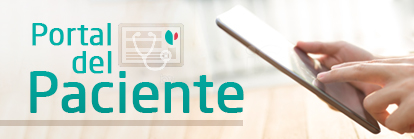Nephrology and Hypertension
Situation: planta 3 encima de aula magna. mapas en planta 1
Phone: ext 2294
Head of department: Dr. Alberto Ortiz
Opening times: Urgencias 24 Horas, Consultas Bajo Cita Previa
SERVICE ACTIVITY AREAS AND PHYSICAL SPACES:
General Hospitalisation
- Inpatient-unit: located on the second floor (62 and 12); average number of patients admitted 10; acute glomerular pathology, acute renal failure, complications in dialysis patients, complications in transplant patients.
- Hospital interconsultations: acute renal complications in patients admitted to medical-surgical areas are very frequent. It is estimated that 15 to 20% of admitted patients have fluid and electrolyte disorders or renal dysfunction. This is a very important area for our service, since it allows us to provide a global service to patients with renal pathology.
Special or intensive care
- Transplant-unit: (unit 62) Beds managed for immediate post renal transplant management.
Intermediate care
- Dialysis-unit: (661 sqm of floor space, third floor)
Haemodialysis: Three haemodialysis rooms are available: we have a total of 17 dialysis stations, with 3 stations in room C and 2 stations in room B.
Peritoneal dialysis: 36 sqm, including one of the offices and two treatment rooms for PD exchanges and training and catheter placement. PD Cyclers: 2.
Outpatient consultation
- General: The outpatient consultation area is divided into the main clinical Nephrology area and the Hypertension Unit
- High resolution:
- P-type consultation: preferred patients. Allocated time 30 min/patient
- T-type consultation: evaluation of new patient tests, diagnosis, therapeutic options and report writing.
- Specialist:
- ACKD: Advanced chronic kidney disease
- AKI: Acute kidney injury
- Diabetic nephropathy
- Polycystic Kidney Disease and other Familial Nephropathies
- Autoimmune Glomerular Disease
- Special non-invasive diagnostic tests: Renal biopsy
- Interventional diagnostic/therapeutic tests or operating rooms
- ABPM
- Assessment of patients with HBP: Ankle-arm index. Pulse wave velocity measurement.
- Ultrasound scan: two ultrasound scanners are available for abdominal ultrasound, FAV doppler ultrasound, lung comets.
- Meeting room or service room
- Medical office room on the third floor (all sessions are in this room except pathological anatomy)
- Offices and other facilities
- Third floor (Dialysis Unit) Haemodialysis Room. Peritoneal Dialysis. Consultation rooms: 1 to 6.
- Offices on the third floor.
- Renal and Vascular Pathology Research Laboratory: located on the 4th floor of the Medical Research Building. It covers over 250 square metres, and is equipped with all the means available for modern research in cellular and molecular medicine.
TECHNOLOGICAL EQUIPMENT
As required for the service:
- Hospitalisation floor
- Ultrasound with vascular and abdominal probe
- Electrocardiography device
- Monitor (dialysis room)
- Optical microscope for urine sediment analysis
- Laboratories
- Renal, Vascular and Diabetes Pathology Research Laboratory:
- Cell culture hoods and ovens.
- Centrifuges.
- Conventional light microscopes
- Phase contrast and fluorescence microscope
- -20º and -80ºC freezers
- Luminometer
- Equipment for nucleic acid and protein studies
- Thermocycler
- Material for fixing, cutting, staining and evaluating tissues (kerosene embedder, microtome and cryostat, staining bridges, visible light microscope)
- ELISA plate reader, Beckman L8e80
- Ultracentrifuge and others.
- The support services include, most notably:
- Conventional flow cytometer - Confocal microscopy
- Quantitative PCR
- Main laboratories for blood biochemistry.
- Animal Experimentation Laboratory: fully equipped with areas and personnel to care for and maintain the animals, and an experimental operating room. There are colonies of rats and mice, including Fn14-deficient mice.
- Isotope laboratory: where techniques requiring the use of radioactive isotopes, such as EMSA and Northern blot, can be carried out.
- HPLC ÄktaPurifier (Amersham) with reverse phase, anion exchange and cation exchange chromatographic columns, among others; Agilent1200 LC/MS/MS HPLC and nano HPLC connected to an Agilent6460 triple quadrupole for MRM methodology.
- Diagnostic techniques
- Bioimpedance.
- Pulse Wave Velocity.
- Fistula ultrasound.
- Pulmonary ultrasound in dialysis.
- Special intervention rooms:
- Ground floor vascular radiology, renal biopsy.
- Third floor, peritoneal dialysis, for insertion of urgent temporary dialysis vascular accesses.
In shared use with other services:
- Pathological Anatomy: Stereo microscopy and preparation for renal biopsy specimens, immunofluorescence.
- Radiology: Vascular radiology. Renal biopsy.
Hospital Universitario Fundación Jiménez Díaz
Avda. Reyes Católicos, 2
28040 Madrid Madrid
© 2026 Quirónsalud - All rights reserved























